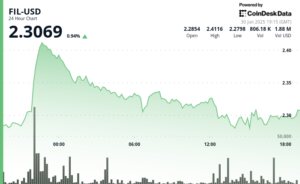The Central Bank of Brazil recently announced the addition of new use cases for its upcoming digital currency, the drex CBDC. This second phase of the pilot program will focus on 13 selected instances out of the 46 proposals received, including platforms for tokenizing real estate, creating liquidity pools for trading public securities, and automating automobile transactions. These use cases highlight the potential versatility and practical applications of the drex CBDC in various sectors of the economy.
The decision to expand the pilot program and explore new use cases demonstrates the Central Bank’s commitment to testing and refining the drex CBDC before its official launch. By selecting a diverse range of applications, the bank aims to examine the currency’s usability, security, and efficiency in different scenarios. This hands-on approach will help identify potential challenges and opportunities for improvement, ensuring a successful integration of the drex CBDC into the financial system.
Tokenizing real estate is one of the innovative use cases that the Central Bank of Brazil plans to explore in the pilot program. This involves creating digital tokens that represent ownership stakes in real estate properties, allowing for easier and more transparent transactions. By leveraging the blockchain technology underlying the drex CBDC, tokenization can streamline the process of buying and selling real estate, reduce transaction costs, and increase accessibility to investment opportunities in the property market.
Another use case that will be piloted is the creation of liquidity pools for trading public securities using the drex CBDC. A liquidity pool is a type of financial instrument that provides market participants with access to a pool of assets for trading purposes. By introducing this feature to the digital currency, the Central Bank aims to enhance liquidity in the securities market, facilitate efficient price discovery, and promote increased trading activity. This initiative could potentially boost investor confidence and attract more participants to the market.
Automating automobile transactions is another exciting use case that will be part of the second phase of the drex CBDC pilot program. By integrating the digital currency into the automotive industry, the Central Bank aims to streamline the process of buying, selling, and financing vehicles. This automation can reduce paperwork, minimize turnaround times, and improve the overall user experience for consumers and businesses alike. With the drex CBDC, transactions such as car purchases, loans, and insurance payments can be executed seamlessly and securely, paving the way for a more efficient automotive ecosystem.
Overall, the Central Bank of Brazil’s decision to expand the pilot program for the drex CBDC and introduce new use cases demonstrates the bank’s proactive approach to digital currency innovation. By testing the currency in various real-world scenarios, the bank aims to gather valuable insights, address potential challenges, and optimize the drex CBDC for widespread adoption. With its focus on tokenizing real estate, creating liquidity pools for public securities trading, and automating automobile transactions, the drex CBDC shows promise in revolutionizing financial transactions and transforming key sectors of the economy. As the pilot program progresses, stakeholders can look forward to witnessing the transformative potential of the drex CBDC in reshaping the future of digital payments and financial services in Brazil.

















